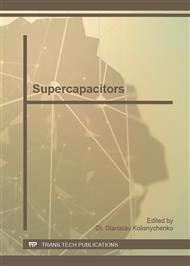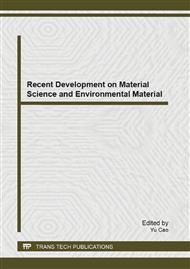p.488
p.492
p.496
p.501
p.505
p.509
p.517
p.522
p.526
Hybrid Supercapacitors Based on Polyaniline/Activated Carbon Fiber Composite Electrode Materials
Abstract:
This essay describes the findings of generating the electrode composite of polyaniline/activated carbon fiber ( PANI/ACF) by repeatedly immersing eigenstate PANI into the solution of NMP and CHCl3 added with VC. A samples surface profile and structure were represented using SEM and FT-IR. Thereafter the composite was assembled into a super capacitor, electrochemical performances of which were then tested through cyclic voltammetry (CV). The result showed that the specific capacitance of this composite is up to 531.75F/g in the solution of 6 mol·L-1 KOH.
Info:
Periodical:
Pages:
505-508
Citation:
Online since:
September 2013
Authors:
Price:
Сopyright:
© 2013 Trans Tech Publications Ltd. All Rights Reserved
Share:
Citation:



